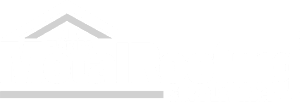A Comprehensive Guide to Metal Roof Panels
What Are Metal Roof Panels?
Metal roof panels are a versatile and durable roofing solution made from various types of metal, such as steel, aluminum, copper, or zinc. These panels are designed to provide a protective barrier against the elements while offering a sleek, modern aesthetic. Their primary purpose is to shield buildings from weather conditions like rain, snow, and wind, while also contributing to energy efficiency and structural integrity.
The history of metal roofing dates back centuries, with early examples seen in ancient architecture where copper and lead were used for their durability and malleability. Over time, advancements in manufacturing and coating technologies have transformed metal roofing into a highly sought-after option for residential, commercial, and industrial applications. Today, metal roof panels are celebrated for their longevity, sustainability, and ability to adapt to various architectural styles.
In recent years, the popularity of metal roof panels has surged, driven by their eco-friendly properties and long-term cost savings. Homeowners and businesses alike are recognizing the value of investing in a roofing material that not only enhances curb appeal but also withstands the test of time.
Types of Metal Roof Panels
Standing Seam Panels
Standing seam panels are one of the most recognizable and widely used types of metal roofing. These panels feature raised seams that interlock vertically, creating a sleek, continuous appearance. The concealed fasteners used in standing seam systems enhance their weather resistance and provide a clean, modern look.
These panels are commonly used in both residential and commercial settings due to their durability and low maintenance requirements. They are particularly well-suited for areas prone to heavy rainfall or snow, as their design allows water to run off easily. Additionally, standing seam panels are often chosen for their compatibility with solar panel installations, making them a popular choice for eco-conscious property owners.
Corrugated Metal Panels
Corrugated metal panels are characterized by their wavy, ribbed design, which adds structural strength and a unique aesthetic. Originally popular in agricultural and industrial settings, these panels have found their way into residential applications, especially for rustic or modern farmhouse designs.
The lightweight nature of corrugated panels makes them easy to install, and their affordability makes them an attractive option for budget-conscious projects. Despite their lower cost, they offer excellent durability and can withstand harsh weather conditions, making them a practical choice for a variety of applications.
Metal Shingles and Tiles
Metal shingles and tiles are designed to mimic the appearance of traditional roofing materials like asphalt shingles, clay tiles, or wood shakes. They offer the same aesthetic appeal as these materials but with the added benefits of metal, such as increased durability and lower maintenance.
These panels are ideal for homeowners who want the classic look of traditional roofing without sacrificing performance. Metal shingles and tiles are available in a wide range of colors and finishes, allowing for customization to match any architectural style. Their interlocking design also enhances wind resistance, making them a reliable choice for areas prone to storms.
Insulated Metal Panels (IMPs)
Insulated metal panels (IMPs) are a high-performance roofing solution that combines a metal exterior with a layer of rigid foam insulation. This design provides exceptional thermal efficiency, helping to regulate indoor temperatures and reduce energy costs.
IMPs are commonly used in commercial and industrial buildings, where energy efficiency is a top priority. However, they are also gaining popularity in residential applications, particularly in regions with extreme temperatures. In addition to their energy-saving properties, IMPs offer excellent soundproofing and a sleek, modern appearance.
Benefits of Metal Roof Panels
Durability and Longevity
One of the most significant advantages of metal roof panels is their exceptional durability. Unlike traditional roofing materials, metal is resistant to weather-related damage, including heavy rain, snow, and hail. It is also fire-resistant and impervious to pests like termites, ensuring a longer lifespan.
Metal roofs can last 40 to 70 years or more, depending on the material, far outlasting asphalt shingles, which typically need replacement every 20 to 30 years. This longevity makes metal roofing a cost-effective investment over time.
Energy Efficiency
Metal roof panels are known for their reflective properties, which help reduce heat absorption and lower cooling costs during hot weather. Many metal roofs are coated with special finishes that enhance their energy efficiency, making them an excellent choice for eco-conscious homeowners.
Additionally, metal roofs are highly compatible with solar panel installations, further contributing to energy savings and sustainability. By combining a metal roof with renewable energy systems, property owners can significantly reduce their carbon footprint.
Low Maintenance Requirements
Unlike other roofing materials that require frequent repairs or replacements, metal roofs are relatively low maintenance. They are easy to clean and resistant to issues like mold, mildew, and rot. Regular inspections and minor touch-ups are usually all that’s needed to keep a metal roof in excellent condition.
Over time, the reduced maintenance costs can add up to significant savings, making metal roofing an attractive option for those looking to minimize upkeep.
Eco-Friendliness
Metal roof panels are one of the most sustainable roofing options available. Most metal roofing materials are made from recycled content and are fully recyclable at the end of their lifespan. This reduces waste and supports a circular economy.
Additionally, metal roofs can contribute to green building certifications, such as LEED, by improving energy efficiency and reducing environmental impact. For homeowners and businesses aiming to meet sustainability goals, metal roofing is a smart choice.
Factors to Consider When Choosing Metal Roof Panels
Material Options
Metal roof panels are available in various materials, each with its own set of advantages. Aluminum is lightweight and corrosion-resistant, making it ideal for coastal areas. Steel is strong and cost-effective, while copper offers a premium, timeless look. Zinc is another durable option known for its self-healing properties, which allow it to repair minor scratches over time.
Coatings and Finishes
Protective coatings are essential for enhancing the durability and appearance of metal roof panels. Galvanized and galvalume finishes are popular choices, offering excellent resistance to rust and corrosion. Additionally, painted finishes are available in a wide range of colors, allowing for customization to suit any design preference.
Cost and Budget
While metal roofing has a higher upfront cost compared to materials like asphalt shingles, its long-term savings make it a worthwhile investment. Factors such as material type, panel size, and installation complexity can influence pricing, so it’s essential to consider both initial costs and potential savings over time.
Climate and Weather Conditions
The performance of metal roof panels can vary depending on the climate. For example, aluminum is ideal for humid or coastal regions due to its resistance to rust, while steel is better suited for areas with heavy snowfall. Understanding how different metals perform in various weather conditions is crucial when making a selection.
Installation Process for Metal Roof Panels
Preparation and Planning
Proper preparation is key to a successful metal roof installation. This includes taking accurate measurements, inspecting the substrate, and ensuring the roof structure can support the weight of the panels.
Installation Techniques
Metal roof panels can be installed using concealed or exposed fasteners, depending on the design. Concealed fasteners provide a cleaner look and better weather resistance, while exposed fasteners are more cost-effective. Avoiding common mistakes, such as improper alignment or over-tightening screws, is essential for a durable installation.
Hiring a Professional vs. DIY
While DIY installation can save money, it requires specialized tools and expertise. Hiring a professional ensures the job is done correctly and safely, especially for complex roof designs. Homeowners considering a DIY approach should weigh the risks and benefits carefully.
Common Myths and Misconceptions About Metal Roof Panels
Metal roofs are often misunderstood. For example, many people believe they are noisy during rainstorms, but modern insulation techniques effectively dampen sound. Another common myth is that metal roofs attract lightning, but they are no more likely to be struck than any other roofing material. In fact, metal roofs are safer because they are non-combustible.
Maintenance and Care for Metal Roof Panels
Routine Inspections
Regular inspections can help identify issues like loose fasteners or minor dents before they become major problems.
Cleaning Tips
Use a soft brush or low-pressure washer to remove dirt and debris. Avoid abrasive cleaners that could damage the finish.
Repairing Minor Damages
Small scratches can be touched up with paint, while dents may require professional repair. Addressing issues promptly can extend the roof’s lifespan.
Comparing Metal Roof Panels to Other Roofing Materials
Metal roofs outperform asphalt shingles in durability and energy efficiency. Compared to tile roofing, metal is lighter and easier to install. Unlike wood shakes, metal is fire-resistant and more environmentally friendly.
Trends and Innovations in Metal Roofing
Cool roof technology, customizable designs, and solar panel integration are driving innovation in the metal roofing industry. These advancements make metal roofs more appealing and functional than ever before.

